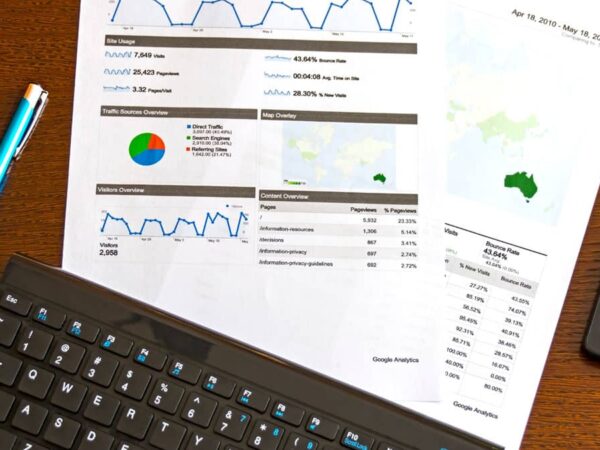Revising Your Business Plan for Recovery
Each small business owner needs to revise their business plan to respond to the evolving realities and set themselves up for recovery.

Vice President of Small Business Community Lending, Edward Timberlake of Fifth Third Bank and Managing Director of Access to Capital of the Women’s Business Development Center, Lotika Pai, share best practices to help you revise your business plan for recovery from the challenges caused by the COVID-19 pandemic.
In order to revise your business plan, an understanding of your current financial situation and an understanding of how your customer profiles have changed is a must. With this information, business owners can adapt their model to provide increased value and meet customers’ new needs.
Questions to Ask When Setting Business Goals
Given all the economic changes we have seen recently, it is vital that small business owners take time to reconsider the mission and goals of their business. Timberlake recommends asking the following questions to guide your thinking around business goals.
- Does the service you are providing or the product you are offering still make sense in this economy, or does it need to change?
- Are your business’ current financial needs the same as before?
- Do you need more funding?
- Have your sales changed compared to pre-COVID levels?
- How can you adapt your business to the current market so you can continue to compete?
- How can you change your business model to fit the current market?
Changing Customer Profiles and Preferences
Small business owners have likely needed to change their approach to customer engagement due to stay-at-home orders and health concerns. As a result, customer profiles and the way customers prefer to do business have changed for many small businesses. Pai acknowledges that the changes of the past year are the new normal for the near-term. She identifies four different types of customer profiles that have come out of the pandemic.
Customers who:
- Are willing and able to get out of the house as soon as stay-at-home orders are lifted.
- Will be hesitant to return to pre-COVID activities for some time and need to be assured of their safety.
- Will continue to stay-at-home for an extended period.
- Have suffered financially due to the pandemic and currently have fewer economic resources than usual.
Small business owners must understand the different needs of these customer profiles. Pai recommends customer journey mapping for each product or service you offer. Customer journey mapping allows you to understand what the customer is doing, feeling, and thinking as they interact with your product. This could be as simple as talking to your customers about their needs and preferences during these unprecedented times. Pai says that making incremental changes in your business practices to meet these needs helps to maintain your customer base amid COVID-19. It also provides opportunities for growth.
Read More:
- Customer Journey Mapping – Six Steps to Creating The Complete Customer Journey Maps
- How to Create a Customer Journey Map
- Your Ultimate Guide to Customer Journey Mapping
Adjusting Financial Projections
Business owners who had strong business plans before the COVID crisis likely based those plans on economic projections that are no longer realistic. To adjust these projections, Pai says the first step is understanding your current financial situation. Consider analyzing your profit and loss or cash flow statement to check-in on your business’ financial health. Once you know where your business is right now and how it has been impacted by the current economic situation, you can plan for the future.
Remaining flexible is the key to successfully adapting your business and realistically adjusting your financial projections. For example, if you know that you used to get the majority of your business from foot traffic, Pai suggests pivoting to a digital platform as well. Adjusting your model to meet your customers where they currently are can boost your business. Once you identify how your business can adapt to new customer needs, you can revise your budget and financial projections to realistically support your new business plan.
Market Analysis
What to consider as you adjust your business’ market analysis:
- Who are your potential customers?
- What are customers’ shopping and buying habits?
- Are there challenges for your customer when buying your product or service?
- What are your customers willing to pay for your product or service?
- How can you reach new customers?
Pai cautions against dropping prices as a reaction to declining sales due to a decreased economy. Instead, consider how you can add value to your product or service, so customers are willing to spend money on your small business. For example, instead of dropping prices for online classes, a Pilates studio started hosting live, online classes with contemporary music and personal video-coaching from instructors. The Pilates studio did not decrease their price, they added value to their online service. Their customers are willing to pay the standard price because the studio added value to their services.
Read More:
Staffing and Operations Best Practices
As small businesses look toward recovery, it is helpful to consider best practices for setting up a strong staffing and operations foundation. This foundation will better equip them to withstand crises in the future. Timberlake says that creating a positive workplace culture with an optimistic attitude and open lines of communication promotes employee loyalty. People are a small business’s number one asset. Having the right people on your team can increase your success. Timberlake also recommends cross-training your employees. That way, if one of your employees is out, your business operations can continue smoothly. This can also take some pressure off the business owner if there is a staffing change.
Revise Your Business Plan
In the wake of the COVID crisis, some business owners will need to start fresh with a new business plan. Timberlake says that business plans are meant to be living documents that are continuously updated. Business plans should serve as a roadmap to show you where you have been, where you are, and where you are going. There are many local resources to help you update your business plan or write a new one.
Resources for Small Business Owners
Consider visiting a small business development center or a women’s business center, contacting a SCORE mentor, or getting in touch with small business-focused non-profits like Accion Opportunity Fund. Many of these resources can also help you find funding for your small business.
Small business owners can access free, one-on-one small business advising on business plans, customer journey mapping, and more through the Women’s Business Development Center by calling (312) 853-3477 and making an appointment.
Fifth Third Bank also offers many resources for small business owners at 53.com/business or through your local business Fifth Third Business Banker.








